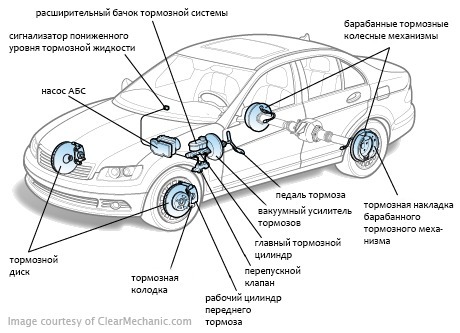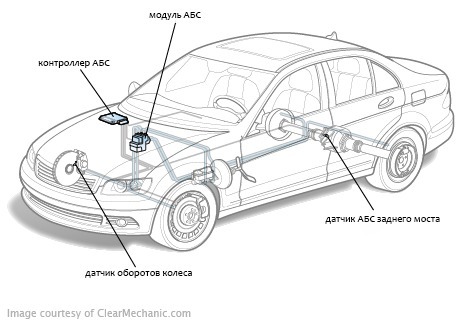
Most of the cars in the budget models react very sharply to brake pedal action. In fact, the pedal actuates the brake mechanism and the wheels slow down. You don't have to figure out what you're gonna do, the harder it is, the harder it is. Such a system, however, has significant shortcomings.

In conjunction with ABS, the electronic brake force distribution (EBD) system has been implemented. The objective of the system is, as it becomes clear from the name, in the competent distribution of braking rates for each wheel. It happens so that the car falls on a heterogeneous road surface. Let' s say we had to pull over, and the right wheels ended up on the dirt road, while the left was left on the pavement. Accordingly, the friction between the wheels on the ground and the asphalt is not the same. To avoid the oversteer, the EBD will reinforce the braking of the left wheels and weaken the right, thereby maintaining control over the vehicle. History
History
The first began to fight the US wheel lock. In the late 1960s, Bendix developed ABS, thus giving the soil the development of EBD and other brake additions. Chrysler was a pioneer vehicle in 1971.
In the first instance, executive vehicles were supplied with such systems. Today, the ABS and EBD technologies are no longer innovative and are installed, at least as an option, for most mid-class cars and higher.
How it works
The purpose of ABS is to prevent wheel locks. While the EBD controls the distribution of the brake force.
The EBD system operates on the data that the ABS block reads. Sensors are installed on each wheel to transmit the frequency of wheel rotation by means of electrical impulses. Also, the system reads the readings of the pressure sensor in the wheels, thereby determining the loading of the vehicle. In the end, the automatics has data on the speed of the vehicle, its loading and the degree of traction of the wheels with the pavement. The main advantage is that the data is read from each wheel separately, which allows the braking mechanism to be correctly distributed, thus avoiding loss of control.
The easiest way to understand the principle of EBD is to present a tug-of-war competition. As long as the teams are drawn with equal force, the rope remains unwielded, but as soon as one is given, the rope abruptly ends in the direction of a stronger team. This is the same principle. In order to prevent the car from derelating the skid, the electronics evenly distribute the effort, "help" the weakened wheel and, if necessary, weaken the other wheels.
Operations
Of course, the system cannot provide for everything. It happens so that the wheel short of the short time can lose traction control of the road and electronics. In addition, the ABS system itself is not always 100% effective. Especially in the winter time of the year, "jet" braking can produce better results. The projector on the winter rubber is significantly deeper than the summer variant, and when it moves on the trail, the blocked wheels will snow the snow, thus reducing the stopping distance.









